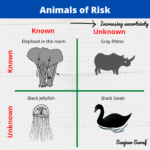In rare cases, lithium batteries can catch fire.
Lithium battery fires have resulted in recalls in the recent past – a few notable ones are indicated in the table below.
| Year | Device | Battery Maker | Number of Devices Recalled | Number of Reported Incidents |
|---|---|---|---|---|
| Oct. 2000 | Dell Notebook | Sanyo | 27,000 | 1 |
| May 2001 | Dell Notebook | N/A | 284,000 | 1 |
| Sept. 2002 | EV Global Motors Electric Bicycle | N/A | 2,000 | 5 |
| Oct. 2004 | Kyocera Cell-phone | Counterfeit | 1,000,0000 | 14 |
| March 2005 | Apple Notebook | LG Chem | 128,000 | 4 |
| June 2005 | Belkin GPS | N/A | 10,300 | 15 |
| August 2005 | Nikon Digital Camera | N/A | 710,000 | 4 |
| April 2006 | Disney (Memcorp) Portable DVD Player | McNair Technology / Unitech Battery | 102,000 | 17 |
| August 2006 | Dell Notebook | Sony | 4,100,000 | 6 |
Source: Values in the table are taken from NY times article – “Dell Will Recall Batteries in PC’s”, Aug 2006. Further details can be obtained at Consumer Product Safety Commission website.
Undoubtedly, product liability is a major concern; however, if you are considering a recall you need to answer the following questions:
- Cause of the fire – was the battery failure caused by user’s abusive actions or was it an unprovoked failure?
- Do the defective batteries belong to a particular manufacturing batch?
- Is there a particular dominant failure mechanism that is initiating the battery fires?
- What are the likely consequences and severity of the battery fire?
- What kind of statistical confidence can be assigned to future failures?
Predicting Fire Incidents
In order to predict potential failures, one can use statistical analysis based on past incidents. For example, 10-fires occurred in previous million operating hours…now you can estimate the expected frequency of fire with a certain confidence level. However, what complicated predictions is that the frequency of fire incidents in the future may not follow the same rate as before. Particularly if you have a “bad batch” of product out there. Therefore, it is critical to understand the failure modes (manufacturing defects, progressive wear) to have a confidence in prediction of battery fires.
To make a recall decision on battery, you need to take into account the frequency of fires and the resulting consequences.



